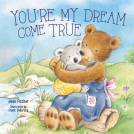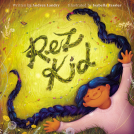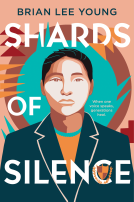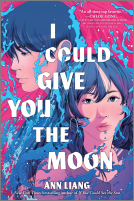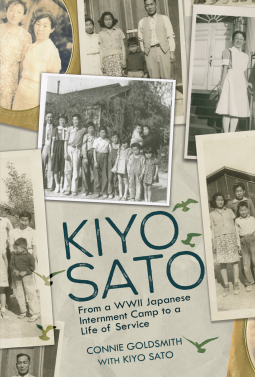
Kiyo Sato
From a WWII Japanese Internment Camp to a Life of Service
by Connie Goldsmith
This title was previously available on NetGalley and is now archived.
Send NetGalley books directly to your Kindle or Kindle app
1
To read on a Kindle or Kindle app, please add kindle@netgalley.com as an approved email address to receive files in your Amazon account. Click here for step-by-step instructions.
2
Also find your Kindle email address within your Amazon account, and enter it here.
Pub Date Sep 01 2020 | Archive Date Aug 12 2020
Lerner Publishing Group | Twenty-First Century Books ™
Talking about this book? Use #KiyoSato #NetGalley. More hashtag tips!
Description
e-Galley not available for Kindle Download.
"Our camp, they tell us, is now to be called a 'relocation center' and not a 'concentration camp.' We are internees, not prisoners. Here's the truth: I am now a non-alien, stripped of my constitutional rights. I am a prisoner in a concentration camp in my own country. I sleep on a canvas cot under which is a suitcase with my life's belongings: a change of clothes, underwear, a notebook and pencil. Why?"—Kiyo Sato
In 1941 Kiyo Sato and her eight younger siblings lived with their parents on a small farm near Sacramento, California, where they grew strawberries, nuts, and other crops. Kiyo had started college the year before when she was eighteen, and her eldest brother, Seiji, would soon join the US Army. The younger children attended school and worked on the farm after class and on Saturday. On Sunday, they went to church. The Satos were an ordinary American family. Until they weren't.
On December 7, 1941, Japan bombed the US naval base at Pearl Harbor, Hawaii. The next day, US president Franklin Roosevelt declared war on Japan and the United States officially entered World War II. Soon after, in February and March 1942, Roosevelt signed two executive orders which paved the way for the military to round up all Japanese Americans living on the West Coast and incarcerate them in isolated internment camps for the duration of the war. Kiyo and her family were among the nearly 120,000 internees.
In this moving account, Sato and Goldsmith tell the story of the internment years, describing why the internment happened and how it impacted Kiyo and her family. They also discuss the ways in which Kiyo has used her experience to educate other Americans about their history, to promote inclusion, and to fight against similar injustices. Hers is a powerful, relevant, and inspiring story to tell on the 75th anniversary of the end of World War II.
Advance Praise
"A moving, insightful portrait."—Kirkus Reviews
"This informative biography sheds light on a dark chapter in American history."—Booklist
"A moving, insightful portrait."—Kirkus Reviews
"This informative biography sheds light on a dark chapter in American history."—Booklist
Available Editions
| EDITION | Other Format |
| ISBN | 9781541559011 |
| PRICE | $37.32 (USD) |
| PAGES | 136 |
Average rating from 6 members
Featured Reviews
This photo-illustrated biography shares the story of Kiyo Sato, a Japanese-American who experienced a new, sudden level of discrimination immediately after Pearl Harbor and was then rounded up into an internment camp with her family. Even though I have already read a number of other books about this topic, I learned a lot from this one, and I enjoyed the specific perspective of a girl's experience in an internment camp, since I have primarily read about male experiences before
This book strikes the right balance between covering general history and being deeply biographical. It provides historical background about the war and the internment camps, complete with maps to help young readers visualize and understand the geographic elements, and it also follows Kiyo's story specifically, sharing about the personal experiences she had before, during, and after the war. The biography also follows her into her later life of serving as a nurse in the Korean War, raising adopted children, educating school groups about internment, and writing a book.
I enjoyed this a lot, and it intrigued me to learn about some of the different interactions that Kiyo Sato had with white Americans, ranging from the profoundly painful to the positive and mutually beneficial. Instead of painting the story in broad brushstrokes, this book addresses the vagaries of WWII-era America, addressing its racism and institutional failures while also acknowledging that many private citizens knew nothing about the internment camps, did not support them, and were horrified to hear stories like Kiyo's when she was released.
Part of this book covers her experience getting out of the camp after a college agreed to take her on as a student. She attended Hillsdale College in Michigan, and I found this fascinating, since I have connections with people who went to Hillsdale. I had no idea that this small Baptist college accepted Japanese-American students during World War II, and it was interesting to read about Kiyo's experiences there.
This biography is an excellent resource for schools, libraries, and families. It is well-written and engaging, addresses important issues in a clear and nuanced way, and has lots of interesting photos and resources for further research. However, before I close my review, I do want to mention something that I wish the author had handled differently.
The author includes one of the racist political cartoons created by Theodore Geisel, the future Dr. Seuss, and she writes about the impact that cartoons like this had on stirring up racist sentiment prior to internment. Although I am glad that the author addressed this, I wish that she had told her readers that Dr. Seuss later repented of his attitudes and the damage that they caused. After he visited postwar Japan, he wrote "Horton Hears a Who!" as a parable about the dignity and value of all people, reflecting what he had learned.
Although it was appropriate for the author to share the hateful cartoon as a historical artifact, I wish that she had provided additional context for readers who don't know anything about this part of Dr. Seuss's career. Ultimately, she loses the opportunity to provide an example of how people can grow, change, and deeply regret the worst parts of their legacies.








